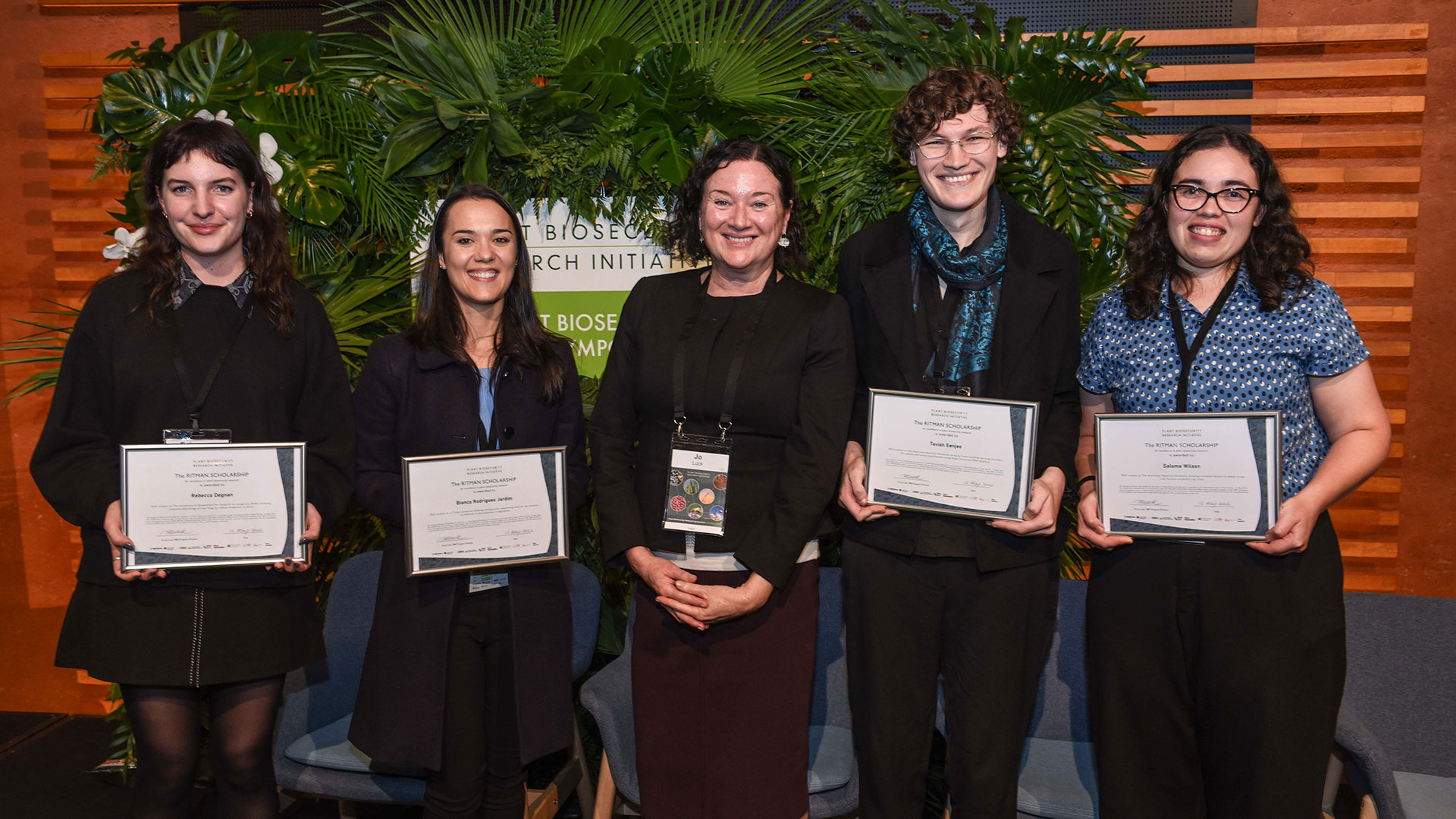Many pests can damage multiple crops across multiple industries, necessitating a coordinated, national approach to control measures and research.
This need has been met with the Plant Biosecurity Research Initiative (PBRI), formed in 2017 to promote collaboration, coordination and co-investment in cross-sectoral plant biosecurity research.
The PBRI has 10 foundation members:
- AgriFutures Australia;
- Cotton Research and Development Corporation;
- Council of Rural Research and Development Corporations;
- Department of Agriculture, Fisheries and Forestry;
- Forest and Wood Products Australia;
- Grains Research and Development Corporation;
- Horticulture Innovation Australia Limited;
- Plant Health Australia (PHA);
- Sugar Research Australia Limited; and
- Wine Australia.
All 10 organisations are signatories to a collaboration agreement and representatives attend quarterly PBRI committee meetings.
A five-year strategy (2018–23) was developed by members to map out the cross-sectoral opportunities for co-investment. Nineteen biosecurity research, development and extension (RD&E) projects have been contracted with a total value of about $52 million (cash and in-kind).
Focus area
The PBRI has six key focus areas, with projects underway in each area. Examples in each category include:
1. Preparedness
A series of nine podcast episodes on the impact and management of fall armyworm were released by the PBRI, produced with growers in mind. This PHA-led project features interviews with local growers and agronomists talking about their first-hand experience managing pests. It also includes information from leading Australian researchers on their latest findings and international experts who share their experience and learnings.
2. Diagnostics
Established in 2019, the GRDC-led project ‘Boosting Diagnostic Capacity for Plant Production Industries’ seeks to increase Australia’s ability to detect, contain and eradicate plant pests and disease outbreaks. The project supports the development of new diagnostic tools, underpinned by effective communication and extension activities to raise awareness of these tools among diagnosticians and industry. These tools will assist in early, rapid and accurate detection of pests and diseases on-farm and allow swift and precise responses from industry.
3. Surveillance
The iMapPESTS project is a collaboration of government, industry and researchers working to develop a mobile cross‐industry plant pest surveillance network. The aim is to provide information to primary producers and government on endemic, established, trade-sensitive or exotic pests. The project focuses on pest management, biosecurity and area freedom.
4. Partnerships
To extend the collaboration, the PBRI has formalised links with Better Border Biosecurity (B3) New Zealand, the European Plant Health Research Community (Euphresco) and the Australian Centre for International Agricultural Research, and, in November 2021, the PBRI also commenced a new partnership with the Plant Health Committee. The benefit of these partnerships has been increased research collaboration, new co-investment opportunities, the international exchange of expertise and the alignment of research investment to national and international biosecurity priorities.
5. Cross-industry biosecurity extension
Prompted by the fall armyworm incursion in Australia, a new network – the Biosecurity Extension Community (BEC) – was created by the PBRI. This project is for extension experts working across plant industries and government. The aim is to increase the coordination of cross-sectoral biosecurity extension efforts.
So far, 110 members have joined from plant industry sectors – such as citrus, nursery, vegetables, forestry, grains, cotton, wine, melons, mangoes and protected cropping – private consultants, RDC extension groups, PHA and state governments. There have been four community meetings held so far, with a focus on learning from biosecurity incursions, sharing biosecurity knowledge and experience, and enhanced professional development for extension practitioners. The BEC has the collective aspiration of increasing the value of plant biosecurity along the supply chain.
6. PBRI events
The PBRI holds regular think-tank style workshops that focus on high-priority biosecurity issues. They include Australian and New Zealand researchers presenting solutions around a defined cross-sectoral priority area. The workshops have focused on shipping container hygiene, sustainable pest management, fall armyworm, biosecurity in the Pacific, surveillance and diagnostics technology. The aim is to identify new areas of research for collaboration and co-investment.
The second Plant Biosecurity Research Symposium was held in May at the National Wine Centre in Adelaide. The two-day symposium, sponsored by the Department of Agriculture, Fisheries and Forestry, included a program of plant biosecurity research, supported by the PBRI member organisations and partners. This event attracted more than 150 researchers and industry members and included a trans-Tasman research session and a partnership panel on enhanced international and national collaboration.
The inaugural Ritman Scholarship, supported by PBRI, was awarded to four PhD students for excellence in plant biosecurity. This travel scholarship enabled the students to attend the symposium to present their research and meet the Australian plant biosecurity community.

The Ritman Scholarship recipients receive their awards on the International Day of Plant Health on 12 May 2022 at the PBRI Symposium. Left to right: Rebecca Degnan (University of Queensland), Bianca Rodrigues-Jardim (La Trobe University), Jo Luck (PBRI), Tavish Eenjes (Australian National University) and Salome Wilson (Australian National University). Source: PBRI
Boosting diagnostic capacity
When a new pest or disease arrives in Australia, our ability to contain and eradicate the pest depends on how rapidly we can accurately diagnose the problem.
The ‘Boosting Diagnostic Capacity for Plant Production Industries’ program focuses on diagnostics for high-priority exotic pests in order to mitigate threats to production, trade and market access.
Twenty-nine new or revised and updated diagnostic tools are being developed that will greatly assist the early detection of exotic pests and diseases.
Exotic pests and diseases – such as Khapra beetle, exotic nematodes, exotic Begomoviruses, Fusarium oxysporum, Luteoviridae and Poleroviruses – are all viable threats to the grains industry. New tools and extended knowledge on these potential threats will benefit grains across the spectrum.
More information: Jo Luck, jo.luck@horticulture.com.au; K’trie Coster, rural R&D for profit (boosting diagnostics) project manager, ktrie.coster@grdc.com.au

























































